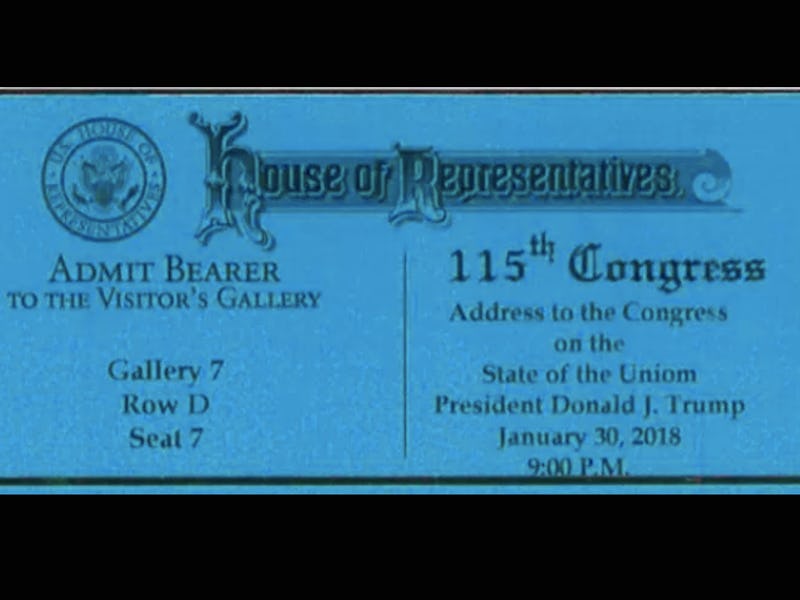Typo on State of the Union Tickets Invites Attendees to State of the Uniom
It's going to be a great evemt.

Leading up to President Donald Trump’s first State of the Union address, some attendees have received misspelled tickets, inviting them to the “State of the Uniom.”
The office of the House of Representatives’ sergeant-at-arms is responsible for issuing the tickets, and it appears they made the embarrassing mistake. This is Typogate.
Some politicians posted their misspelled tickets on Twitter, seizing the opportunity to showcase their fun side. On Monday, Senator Marco Rubio flaunted his dry wit, writing that he is “looking forward to tomorrow’s State of the Uniom.”
Representative Raúl M. Grijalva took the chance to hit Secretary of Education Betsy Devos with a sick burn, implying that she doesn’t know how to spell. Gotcha, Betsy!
The issue was resolved almost immediately, and all affected tickets are in the process of being replaced, according to CNN.
As it so happens, this isn’t the first time the State of the Union has had a name change; in fact, it’s been rebranded and reinvented a few times throughout history. Until 1946, the address was actually called the Annual Message. The basis for the Annual Message is in Article II, Section 3, Clause 1 of the Constitution:
[The President] shall from time to time give to the Congress Information of the State of the Union, and recommend to their Consideration such measures as he shall judge necessary and expedient.
Like most things in the Constitution, this clause leaves room for broad interpretation. President Trump could in theory text a shrug emoji to Speaker of the House Paul Ryan and call it a day. But traditions are resilient, and the precedent for an in-person address started with President George Washington in 1790.
Surprisingly, Washington’s example didn’t last very long. President Thomas Jefferson thought it was far too regal and self-important to deliver an in-person address, according to the NPR Politics Podcast. Jefferson simply sent an written message to Congress by courier, and this was standard practice until President Woodrow Wilson delivered the Annual Message as a speech to a joint session of Congress in 1913.
Prior to Wilson’s in-person address, the Annual Message was largely an administrative report for politicians. Once Wilson turned it into an opportunity for political theater, it began to transform into the public event we know today.
The Annual Message was first broadcast on the radio during Calvin Coolidge’s presidency in 1923. In 1947, President Harry Truman’s State of the Union was the first to be televised. The speech moved into a primetime television slot in 1965 under President Lyndon B. Johnson. In 2002, President George W. Bush delivered the first State of The Union with a live web broadcast.
Even with 250 years of firsts, this year’s event now promises to be the inaugural State of the Uniom. Be sure to tune in at 9 p.m. Eastern on January 30 for the political event of the yeaf.